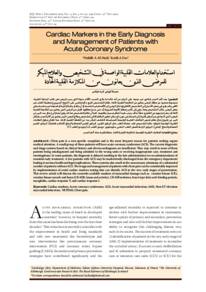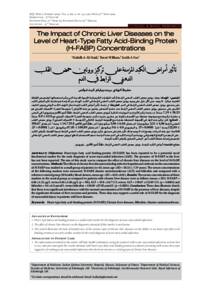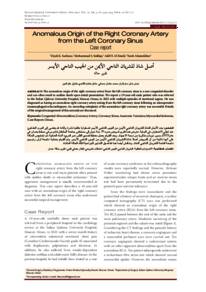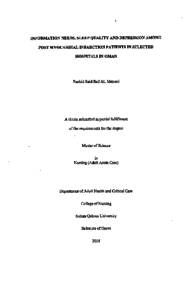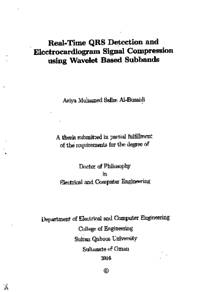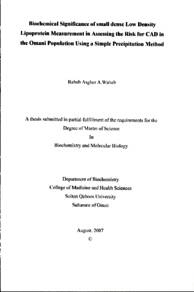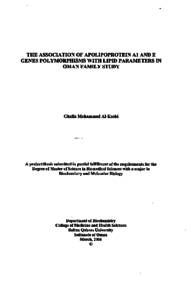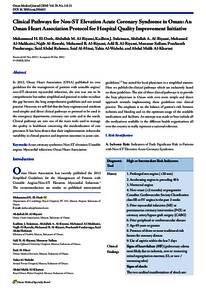Document
Cardiac markers in the early diagnosis and management of patients with acute coronary syndrome.
Contributors
Fox, Keith A., Author
Other titles
استخدام العلامات القلبية الواصمة في التشخيص والعلاج المبكر للمرضى الذين يعانون من المتلازمة القلبية الحادة
Publisher
College of Medicine, Sultan Qaboos University.
Gregorian
2009-12
Language
English
English abstract
Chest pain is a non-specific complaint and is the most frequent reason for patients seeking urgent medical attention. A small group of these patients will have acute coronary syndromes (ACS). The current diagnostic and triage systems based on clinical history and electrocardiograms are insufficient. They may result in some of these patients being misdiagnosed and being admitted to the wrong units or receiving inappropriate care, treatment and investigations. In some patients, the diagnosis is delayed resulting in the late administration (or no administration) of essential early treatment. A few patients with ACS may be inadvertently discharged from the emergency department leading to serious health and legal implications. These systems also result in the unnecessary admission of a substantial number of patients without ACS. The triage and management of patients with chest pain can be considerably improved by implementation of serial cardiac markers testing that can identify ACS in the very early stages of presentation. This review article will discuss the currently available markers of myocardial damage such as creatine kinase (CK), creatine kinase muscle and brain (CK-MB) (mass and activity), CK-MB isoforms, heart-type fatty acid-binding protein, myoglobin, cardiac troponin T, and cardiac troponin I.
Member of
Resource URL
Citation
Al-Hadi, Hafidh A., & Fox, Keith A. (2009). Cardiac Markers in the Early Diagnosis and Management of Patients with Acute Coronary Syndrome. Sultan Qaboos University Medical Journal, 9 (3), 231–246.
Arabic abstract
بعد ألم الصدر شكوى غير نوعية على الرغم من أنه غالبا ما يكون السبب الأكثر حدوثا الذي يجبر المريض على طلب الرعاية الطبية. مجموعة صغيرة من هؤلاء المرضى يعانون من المتلازمة القلبية الحادة. نظام التشخيص المتبع حاليا والمبني على التاريخ السريري وتخطيط القلب غير كافي وقد يؤدي في بعض الأحيان إلى التشخيص الخاطئ وإدخال المرضى إلى الأقسام غير المناسبة. أو أن يتلقوا رعاية أو أدوية أو فحوصا غير مناسبة. وفي بعض المرضى يتأخر التشخيص وهذا يؤدي إلى تأخير إعطاء الأدوية الضرورية أو حتى عدم إعطائها,قليل من المرضى الذين يعانون من المتلازمة القلبية الحادة قد يتم إخراجهم من الطوارئ خطأ. مما قد يترتب عليه أخطار صحية وقانونية. كما أن نظام التشخيص هذا قد يؤدي أيضا إلى إدخال عدد كبير من المرضى الذين لا يعانون من أمراض قلبية إلى المستشفى بدون داع. يمكن تطوير النظام الحالي لتشخيص وعلاج المرضى الذين يعانون من الام الصدر بشكل كبير عن طريق إدخال نظام فحص العلامات القلبية الواصمة المتسلسلة للكشف المبكر جدا عن الجلطة القلبية الحادة. هذا المقال يتناول العلامات القلبية الواصمة المتوفرة حاليا لتشخيص تلف عضلة القلب مثل كرياتين كاينيز، العضلة والدماغ (كتلة وفاعلية). كرياتين كاينيز العضلة والدماغ (مثلي). البروتين الرابط لحمض القلب الدهني. مايجلوبين. تروبنين القلب (ت) وتروبنين القلب (أ).
Category
Journal articles

